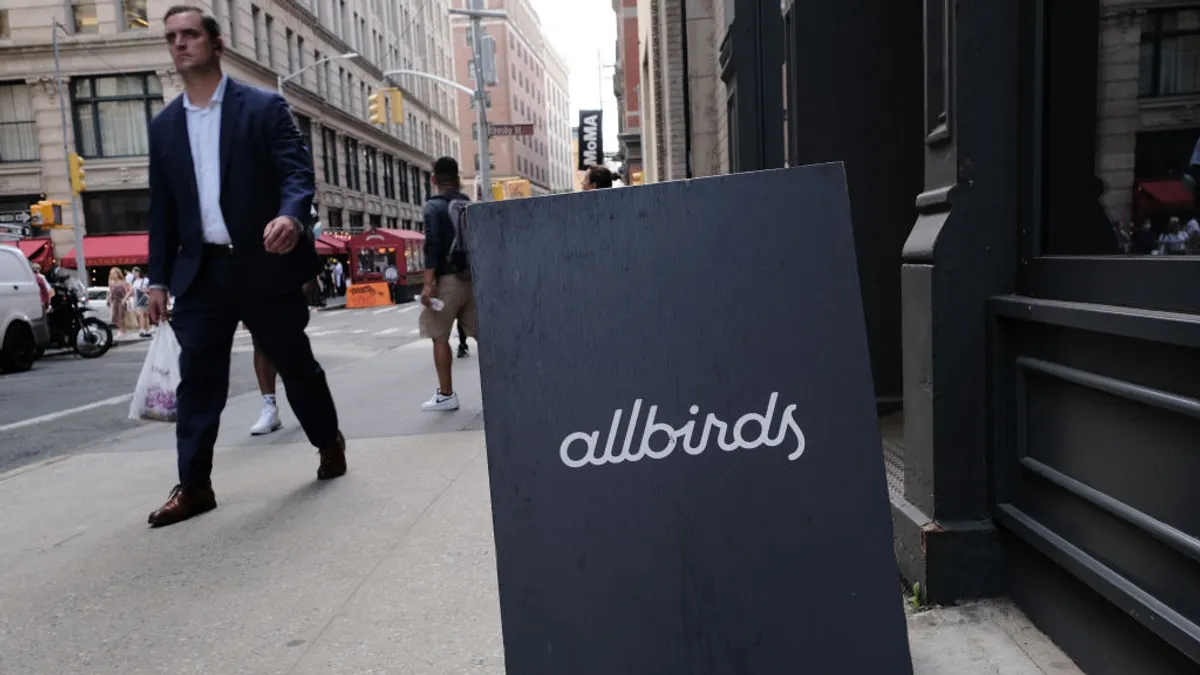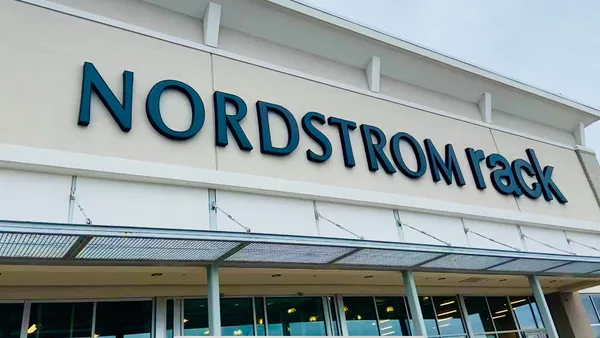Dive Brief:
-
Allbirds in Q3 again felt the effect of its store closures, reporting on Wednesday that net revenue fell nearly 25% to $43 million, though higher average selling prices offset that somewhat. On a two-year basis, sales were down 40.8%, according to GlobalData research.
-
The DTC footwear brand closed a store in the period and another shortly after quarter’s end, bringing its number of shuttered locations in the U.S. to 15 so far this year, executives said on an earnings call.
-
Gross margin edged up by 90 basis points to 44.4% from 43.5% a year ago, thanks mostly to lower costs in freight, duty and warehousing and fewer inventory write-offs. Inventory was down 28.1%. Net loss narrowed by a third to $21.2 million.
Dive Insight:
It remains a vulnerable time for Allbirds, which has been working to claw its way back from a period of plummeting sales and widening losses.
That includes a pullback on marketing, reducing its footprint and also adjusting its distribution overseas. In the third quarter, Allbirds completed a shift to a distributor model in China and entered into a new distributor agreement for six countries in Europe, per its release.
Closer to the holiday quarter, the brand has been boosting its marketing efforts and introducing new products. The brand announced last month that it will be the inaugural footwear partner to Uber Eats Climate Collection, a selection of eco-friendly brands available for delivery on the Uber Eats app. There are 19 million Uber Eats customers within delivery distance of Allbirds stores in California, New York, and Illinois alone, CEO Joe Vernachio told analysts Wednesday.
Among several other measures planned for next year, the brand will conduct a sweepstakes with Marriott Bonvoy and a media and influencer event in New York ahead of the holiday season, he said.
“It is clear to us that now is the right time to begin reintroducing the Allbirds brand by telling great stories to both loyal customers and new audiences,” he said. “We're on a mission to reinforce our aspirational brand position and rebuild our cultural relevance.”
Allbirds has a pipeline for new products and recently introduced two: the performance-oriented Tree Glider and slip-on Lounger Lift.
“We’re thrilled with the strong consumer response to these launches, which reinforces our confidence that our upcoming product, set for release in the second half of 2025, will drive future growth,” Vernachio said.
The new marketing, production and distribution are happening all at once, making it difficult to know what will gain traction, according to William Blair analysts led by Dylan Carden.
“With everything going on in the model, between store closures and shifting to international distribution agreements, it is hard to read what the underlying business is really doing,” Carden said in a Wednesday client note. Still, taking out lost sales from closed stores, William Blair analysts estimate that underlying organic sales growth improved from a mid-20% decline in Q1, to closer to a mid-teens decline in Q3. Meanwhile cash flow has improved, with $27 million used up in Q1 to closer to $12 million used up in Q3.
“This builds greater confidence in the strategy of stabilizing the brand and cash burn ahead of a bigger product, marketing, and engagement push late next year when the company will also have lapped the bulk of its closures and distribution agreement transitions,” Carden said.
But the brand has more work to do to be profitable, according to GlobalData Managing Director Neil Saunders. While store closures may have been wise given their financial drain, they also suggest “a brand relevance problem,” and its sustainability focus may not be enough to impress consumers “more interested in aspects like design, style and fit,” he said in emailed comments.
“To bolster the bottom line, Allbirds needs to grow revenue and not just prune parts of its business that are not working effectively,” he also said. “In our view, Allbirds has a long road ahead before it can move into the black.”












